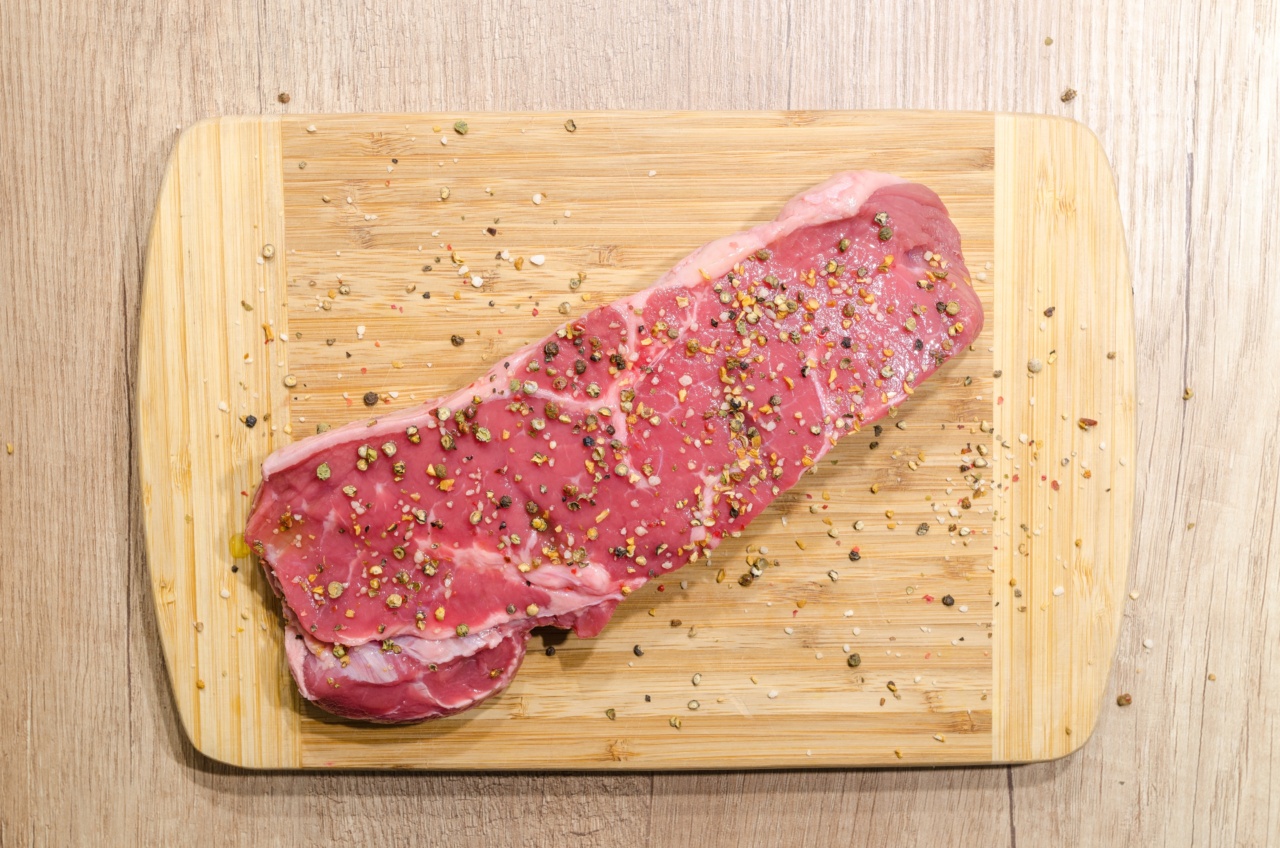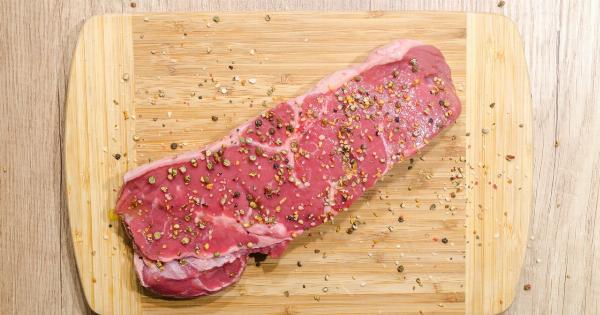Feeding our furry friends a balanced and nutritious diet is essential for their overall health and well-being. With the growing popularity of raw meat-based diets for dogs, there is a hidden danger that pet owners should be aware of.
While these diets have gained traction among advocates of natural feeding, they come with a risk of bacterial contamination that could potentially harm both your dog and your family.
The Appeal of Raw Meat-Based Dog Food
The idea behind raw meat-based dog food is to mimic the ancestral diet of dogs as wolves, who predominantly consumed raw meat, bones, and organs.
Advocates for this type of diet argue that it provides numerous benefits for dogs, including shinier coats, healthier skin, improved dental health, increased energy levels, and even better digestion.
Many commercially available raw meat-based dog food options claim to contain high-quality ingredients, sourced from reputable suppliers.
Some even boast of being grain-free, which can be beneficial for dogs with certain dietary sensitivities or allergies. All of these factors contribute to the allure and increasing popularity of this type of diet.
The Bacterial Threat in Raw Meat-Based Dog Food
While raw meat-based dog food may offer some advantages, the potential risk associated with bacterial contamination cannot be ignored. Raw meat can contain various harmful bacteria, including Salmonella, E. coli, Listeria, and Campylobacter.
These bacteria can pose serious threats to both dogs and humans.
Bacterial contamination can occur during the manufacturing process or through improper handling and storage.
Even if the raw meat is of high quality, there is always a risk of cross-contamination, where bacteria from the raw meat can spread to other surfaces, utensils, or food items.
Dogs consuming contaminated raw meat-based diets can develop symptoms such as diarrhea, vomiting, lethargy, and weight loss. In severe cases, bacterial infections can lead to kidney failure and even death.
Additionally, dogs may become carriers of these bacteria and can transmit them to humans through close contact or exposure to their feces.
The Risks to Human Health
One of the most concerning aspects of feeding raw meat-based dog food is the potential transmission of bacteria to humans. People who come into contact with the contaminated raw meat or the dog’s feces are at risk of infection.
Children, the elderly, pregnant women, and individuals with weakened immune systems are particularly vulnerable to these bacterial infections.
Ingesting even a small amount of bacteria can lead to serious illness, ranging from mild gastrointestinal discomfort to life-threatening conditions.
Common symptoms of bacterial infections in humans include nausea, abdominal pain, fever, muscle aches, and diarrhea. In some cases, these infections can escalate to more severe conditions like septicemia or meningitis.
Preventing Bacterial Contamination
While raw meat-based dog food poses a hidden danger, there are steps you can take to reduce the risk of bacterial contamination:.
1. Practice Proper Hygiene
Always wash your hands thoroughly with soap and warm water after handling raw meat-based dog food or cleaning up after your dog. This simple step can prevent the spread of bacteria to other surfaces or utensils.
2. Handle with Care
Use separate cutting boards, utensils, and bowls for preparing your dog’s food. Avoid using the same kitchen tools you use for your family’s meals. This reduces the chances of cross-contamination and bacterial spread.
3. Store Safely
Ensure proper storage of raw meat-based dog food. Follow the manufacturer’s instructions and store it in a designated area away from human food to prevent accidental contamination.
4. Choose High-Quality Brands
Research and select reputable brands that prioritize safety and quality throughout their manufacturing process. Look for products that have undergone proper testing and have stringent quality control measures in place.
5. Consider Alternative Options
If you are concerned about bacterial contamination or have vulnerable individuals in your household, you may want to consider alternative feeding options for your dog.
There are various commercially available dog foods that offer balanced nutrition without the risk of bacterial infection.
The Bottom Line
While raw meat-based dog food may have its supporters and potential benefits, the hidden danger lurking in the form of bacterial contamination cannot be dismissed. The risks to both your dog’s health and the health of your family are significant.
It is crucial to prioritize proper hygiene, safe handling, and consider the potential consequences before embarking on a raw meat-based diet for your dog.






























